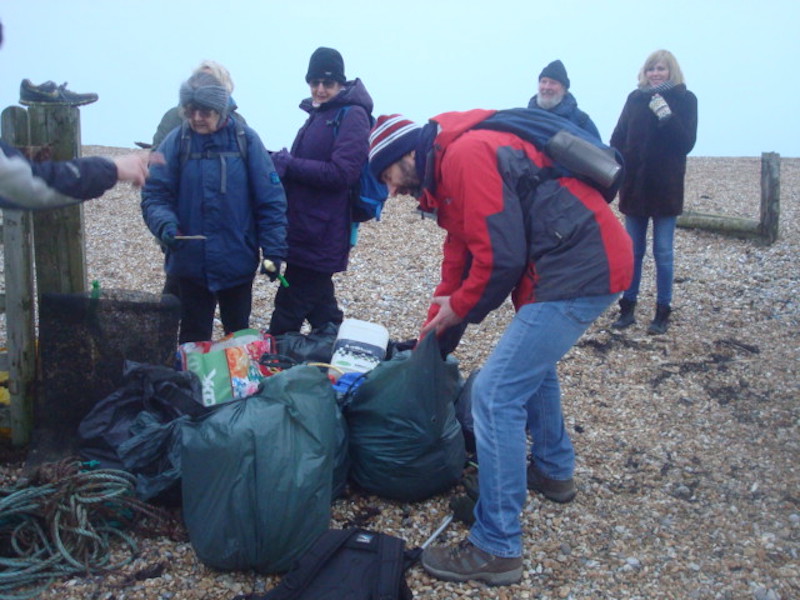Strandliners, the local community interest company tasked with keeping our area’s beaches and riverbanks clear of plastic and other toxic waste, fired the first salvo in its 2020 war on plastic at, appropriately enough, the MOD’s Lydd firing range.
A total of 16 volunteers – among them a bird-watcher, a teacher, a geologist, an engineer, an architect and a dad whose 21-year-old son is also a passionate environmentalist – cleared 150 kilos of debris from a 100-metre stretch of Dungeness shingle, painstakingly sorting it and logging the results before safely disposing of it.
Says Strandliners’ executive director, Andy Dinsdale: “Lydd is one of our regular survey sites. We plan to revisit the same stretch of beach every month this year to monitor types of plastic found, quantities, and possible origins. The data we record from this and our other regular survey sites will provide us with a detailed map of where all this stuff is coming from. That’s the only way to stop the toxic tide.”

Apart from the usual suspects – fishing net, single-use plastic bottles, baby wipes – Strandliners’ volunteer citizen-scientists picked up some stranger items: a sea-mouse (pictured, right) with fishing line entangled on its prickly back; a WWII-era rifle bullet (the Lydd firing range has been in operation for over 150 years); a plastic ID tag from a Maine lobster-pot that washed across the Atlantic; and a slab of larvikite pearl granite stone identified by the geologist member of the Strandliners’ team. This last, bumping along the sea-bed, had travelled from the man-made sea-defences at Fairlight Cove to the Galloways shoreline, a marine journey of 20 miles and, possibly, 20 years.
The volunteers’ journey back to base was shorter but quite as arduous. After a hard 45-minute slog back over unforgiving shingle, the Strandliners’ team was rewarded with a gem of local lore. Pointing to what remained of building foundations at the water’s edge, one volunteer identified them as the site of The British Sailor pub, abandoned in the 1930s and now washed away. And, as a parting shot, the team was favoured by the sight of a barn owl flying at eye-level in parallel with the road the team was driving down for two minutes or more.
If you would like to receive news of upcoming beach-cleans and surveys in our area, or find out how to train to become a citizen-scientist, email strandlinerscic@gmail.com
Image Credits: Strandliners CIC .




Good article
Well done to the Strandliners fantastic effort.
May I just point out the photograph of the Dead Sea mouse is entangled in nylon from commercial fishing not fishing line from anglers.
It only needs a word in the wrong place to conjure in peoples imaginations that anglers have discarded fishing line.
I like many sea anglers come away from the shore with more nylon than I arrived with
Thanks.